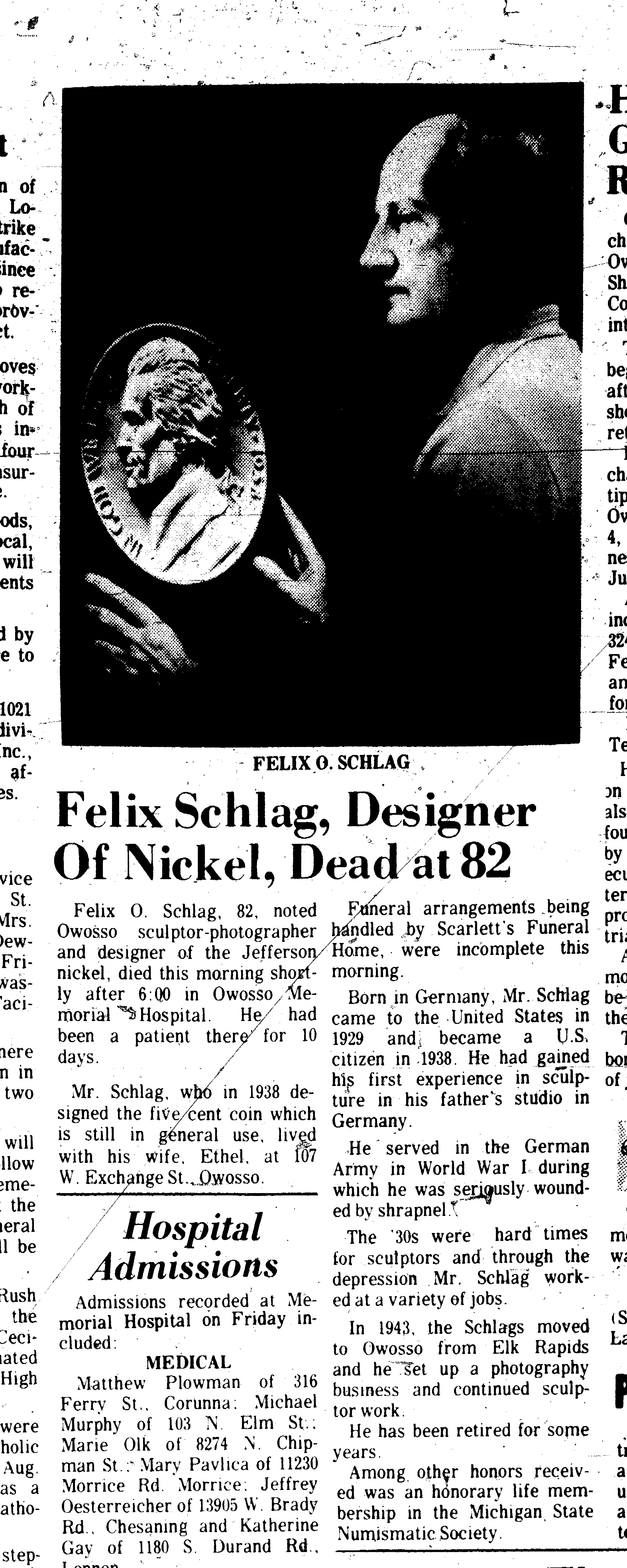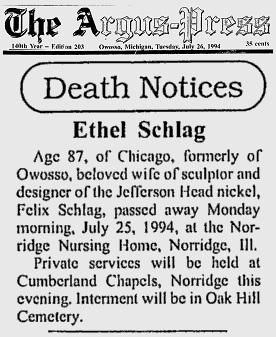

September 4, 1891 (Frankfurt, Germany) - March 9, 1974
(Owosso, Michigan, USA)
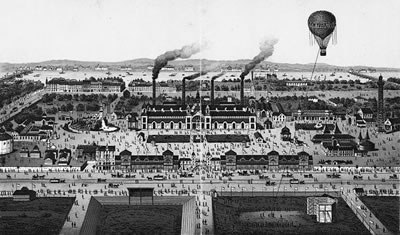 Felix
Oskar (Oscar) Schlag was born on September 4, 1891 in Frankfurt
am Main (Frankfurt on the Main River), Germany to Carl (Karl)
Friedrich Schlag and Therese Josephine (Josefine) (Fischer)
Schlag. The image to the left is of Frankfurt and originates
from 1891. There are many postings across the Internet
that list Felix’s date of birth as December 4; however, it
should be noted that none of these listings provides source
information to support this date. Following are some of the
verifiable sources identified that support a birth date of
September 4, 1891:
Felix
Oskar (Oscar) Schlag was born on September 4, 1891 in Frankfurt
am Main (Frankfurt on the Main River), Germany to Carl (Karl)
Friedrich Schlag and Therese Josephine (Josefine) (Fischer)
Schlag. The image to the left is of Frankfurt and originates
from 1891. There are many postings across the Internet
that list Felix’s date of birth as December 4; however, it
should be noted that none of these listings provides source
information to support this date. Following are some of the
verifiable sources identified that support a birth date of
September 4, 1891: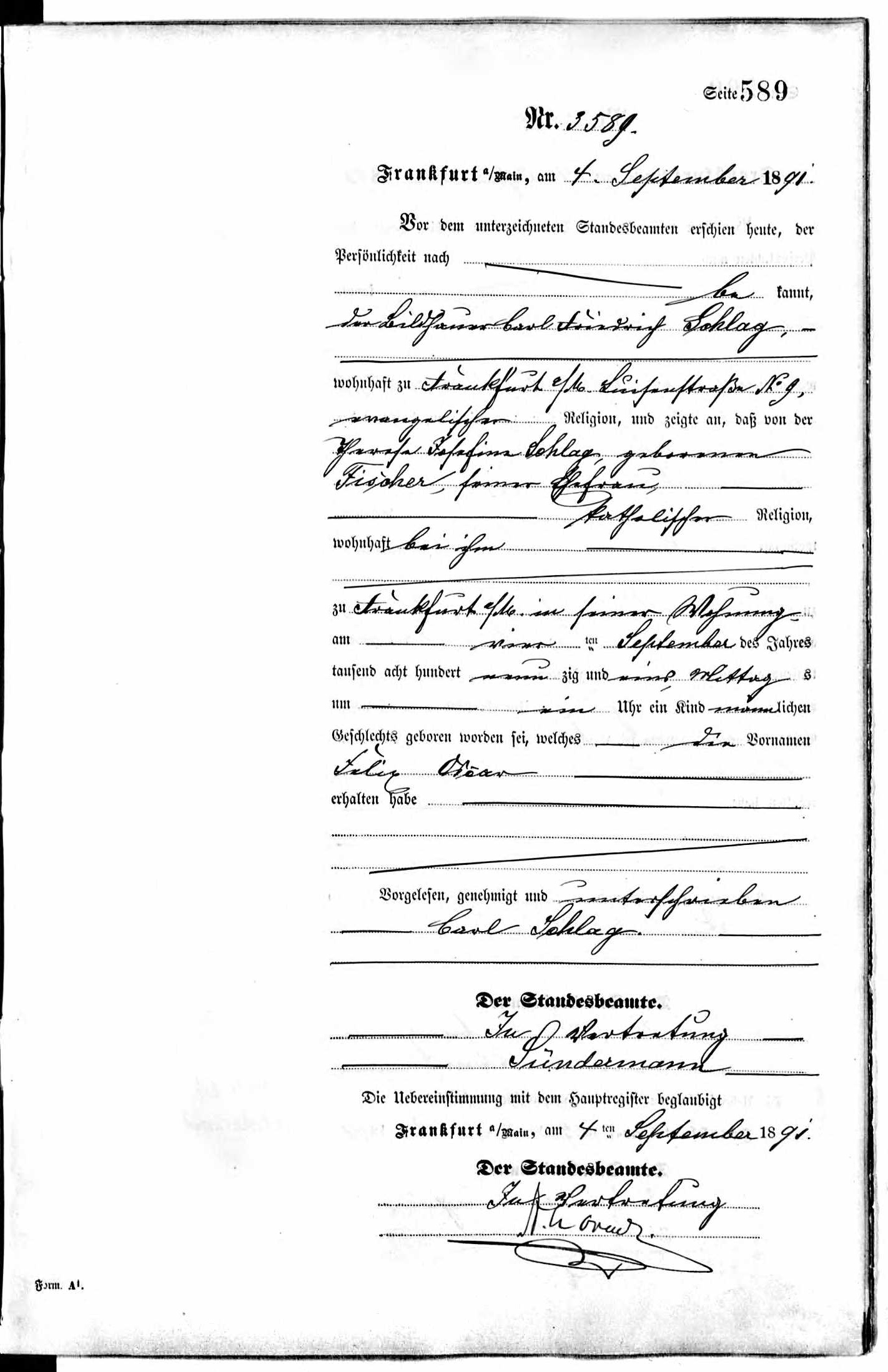
Content
reproduced with the permission of the Associated Press.
Further reproduction prohibited without permission of
the Copyright owner.
Content
reproduced courtesy of the Argus-Press
(www.argus-press.com). Further reproduction prohibited
without permission of the Copyright owner.
 On
May 7, 1912, at the age of 20, Felix officially registered with
the Royal Academy of Art, Munich, now the Academy of Fine
Arts. He was student number 5114 and one of 117 students
in Professor Erwin Kurz's sculpture school. Schlag's
entry in the historical student database of the Academy can be viewed here and the actual scan of the
registry book is here.
On
May 7, 1912, at the age of 20, Felix officially registered with
the Royal Academy of Art, Munich, now the Academy of Fine
Arts. He was student number 5114 and one of 117 students
in Professor Erwin Kurz's sculpture school. Schlag's
entry in the historical student database of the Academy can be viewed here and the actual scan of the
registry book is here.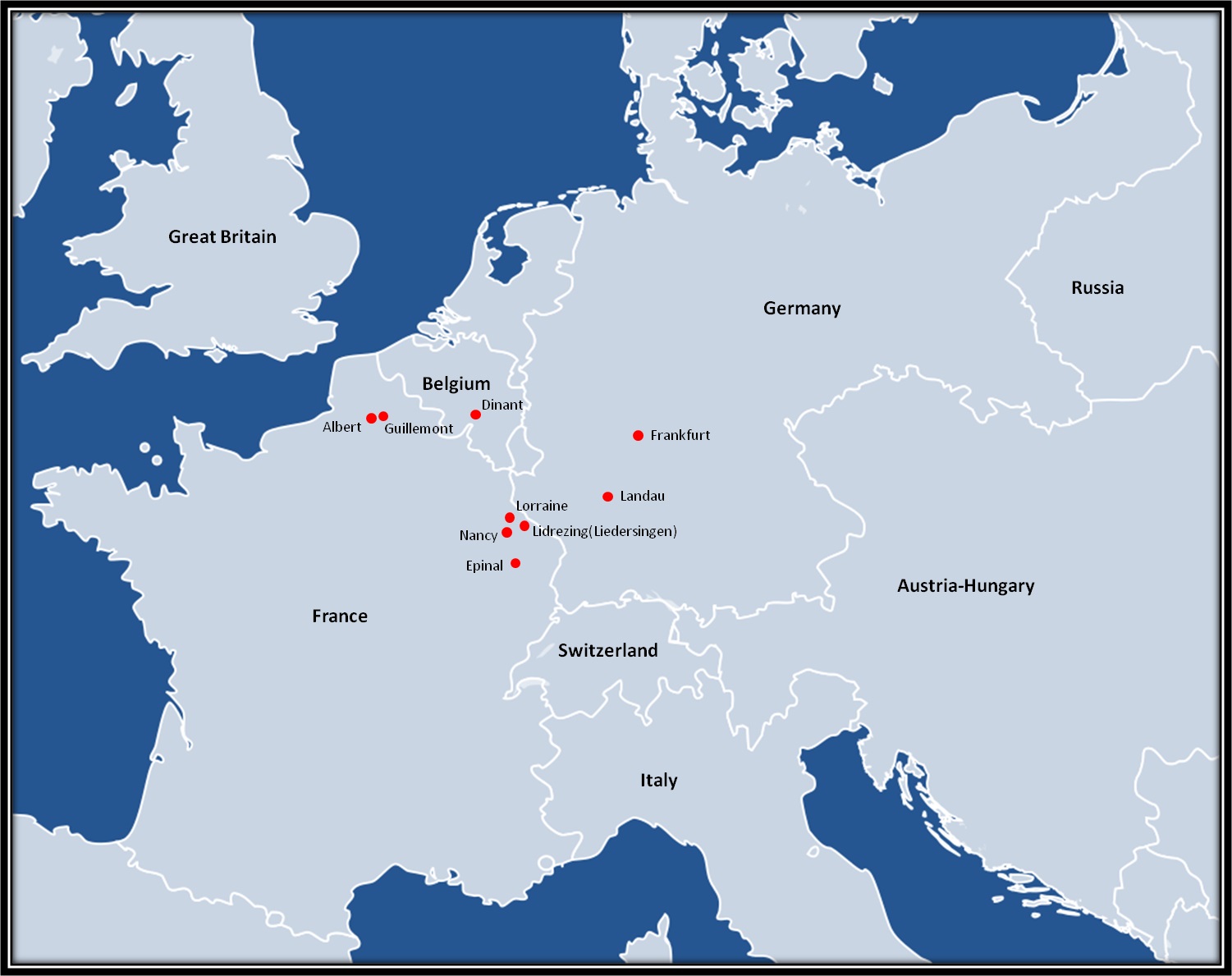 The map
in this section highlights the European cities and towns Schlag
and his unit traversed during his tour. An abbreviated
timeline of Schlag’s military service follows:
The map
in this section highlights the European cities and towns Schlag
and his unit traversed during his tour. An abbreviated
timeline of Schlag’s military service follows: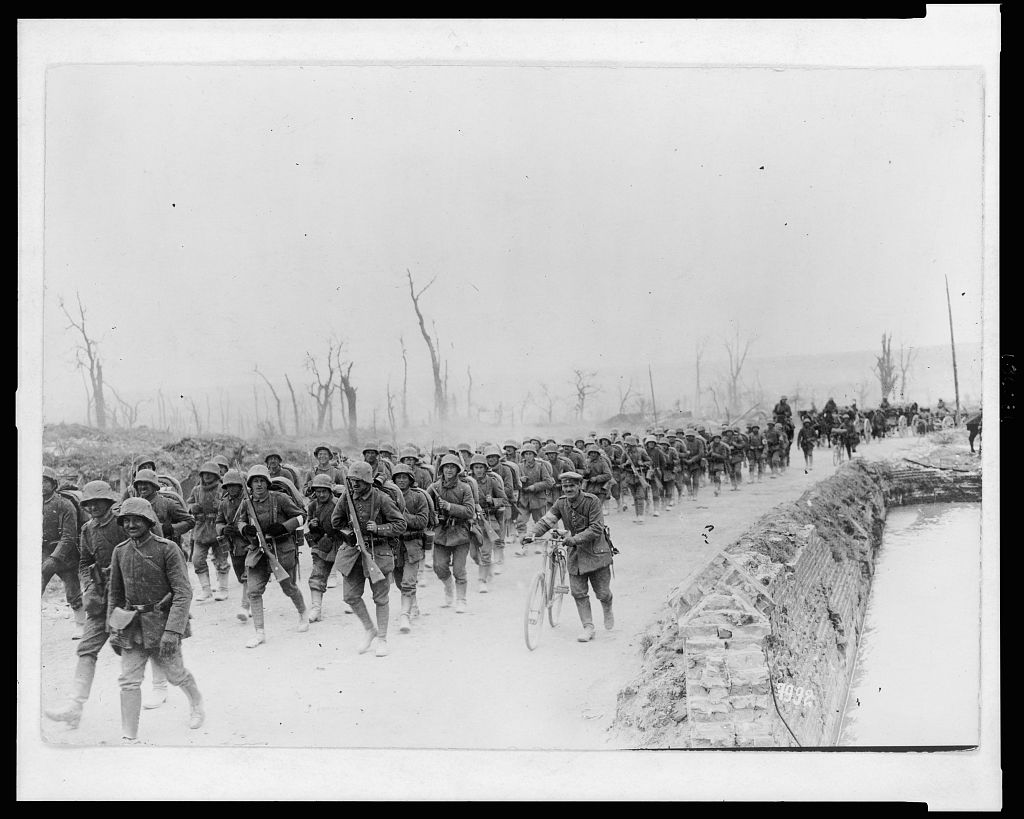 September 22-29, 1914 –
Battle on the Somme; First Battle of Albert, Somme (25 -29
September 1914)
September 22-29, 1914 –
Battle on the Somme; First Battle of Albert, Somme (25 -29
September 1914) June 15, 1916 – Awarded
the P.E.K. II. Prussian Iron Cross Second class
June 15, 1916 – Awarded
the P.E.K. II. Prussian Iron Cross Second class During a series of talks
in the 1960's, Schlag would state that, “it was during the
latter part of my recovery [from injuries sustained in World War
I] that I won first prize for my models for a monumental
fountain, and first prize for the design of a Red Cross medal.”
These accolades were also described in a biography Schlag
provided to the Section of Fine Arts in June 1939.
During a series of talks
in the 1960's, Schlag would state that, “it was during the
latter part of my recovery [from injuries sustained in World War
I] that I won first prize for my models for a monumental
fountain, and first prize for the design of a Red Cross medal.”
These accolades were also described in a biography Schlag
provided to the Section of Fine Arts in June 1939.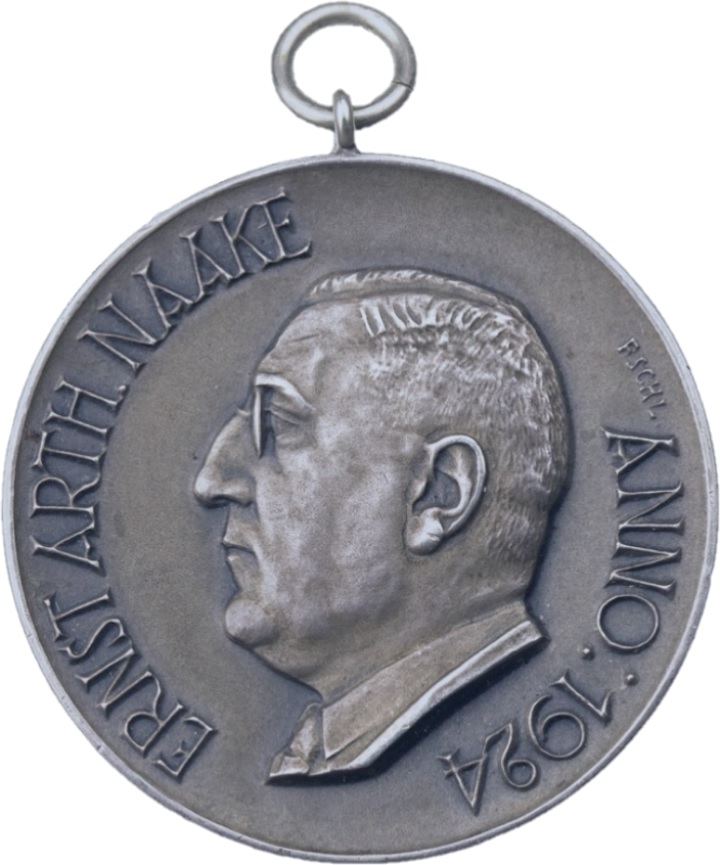
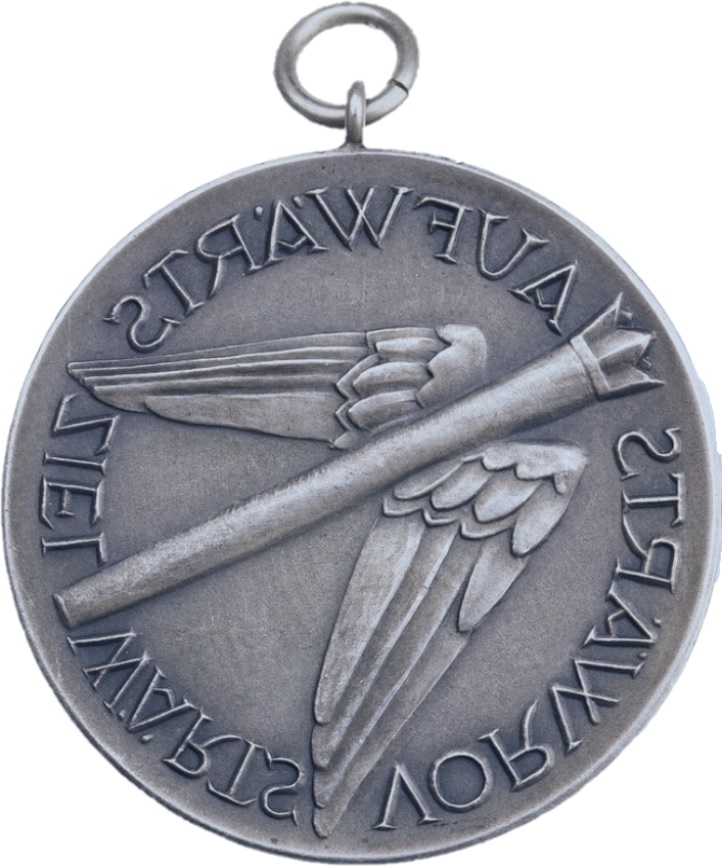
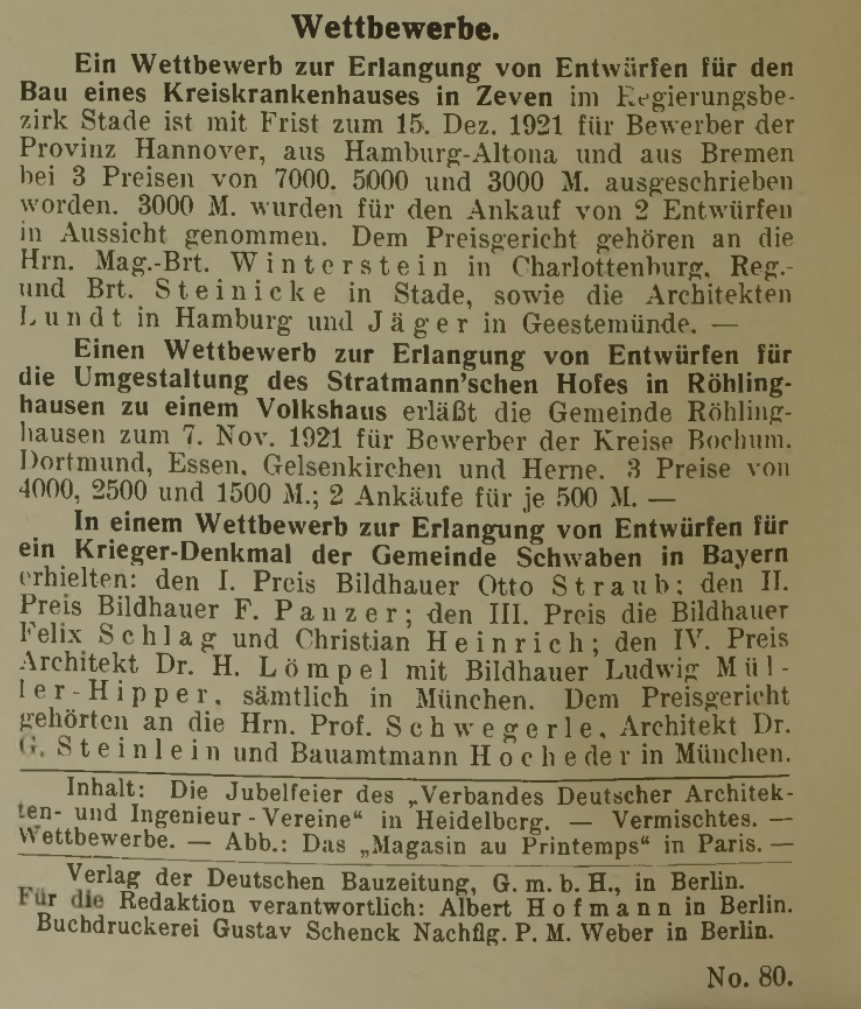 The October 8, 1921 issue of Deutsche Bauzeitung
(German Building Magazine) contains a section entitled,
"Wettbewerbe" or "Competitions." In this text is a write
up explaining that, "in a competition to obtain designs for a
warrior monument of the municipality Schwaben in Bavaria
received: the 1st prize sculptor Otto Straub; the 2nd prize
sculptor F. Panzer; the 3rd prize sculptors Felix Schlag and
Christian Heinrich; the 4th prize architect Dr. H. Lömpel with
sculptor Ludwig Müller - Hipper, all in Munich."
The October 8, 1921 issue of Deutsche Bauzeitung
(German Building Magazine) contains a section entitled,
"Wettbewerbe" or "Competitions." In this text is a write
up explaining that, "in a competition to obtain designs for a
warrior monument of the municipality Schwaben in Bavaria
received: the 1st prize sculptor Otto Straub; the 2nd prize
sculptor F. Panzer; the 3rd prize sculptors Felix Schlag and
Christian Heinrich; the 4th prize architect Dr. H. Lömpel with
sculptor Ludwig Müller - Hipper, all in Munich." In
December 2013, an email was sent to the Stadt Museum in Amberg, Germany
<https://stadtmuseum.amberg.de/index.php?id=367> seeking
information about any monuments attributed to Felix Schlag. To
date, no response has been received from the museum.
In
December 2013, an email was sent to the Stadt Museum in Amberg, Germany
<https://stadtmuseum.amberg.de/index.php?id=367> seeking
information about any monuments attributed to Felix Schlag. To
date, no response has been received from the museum.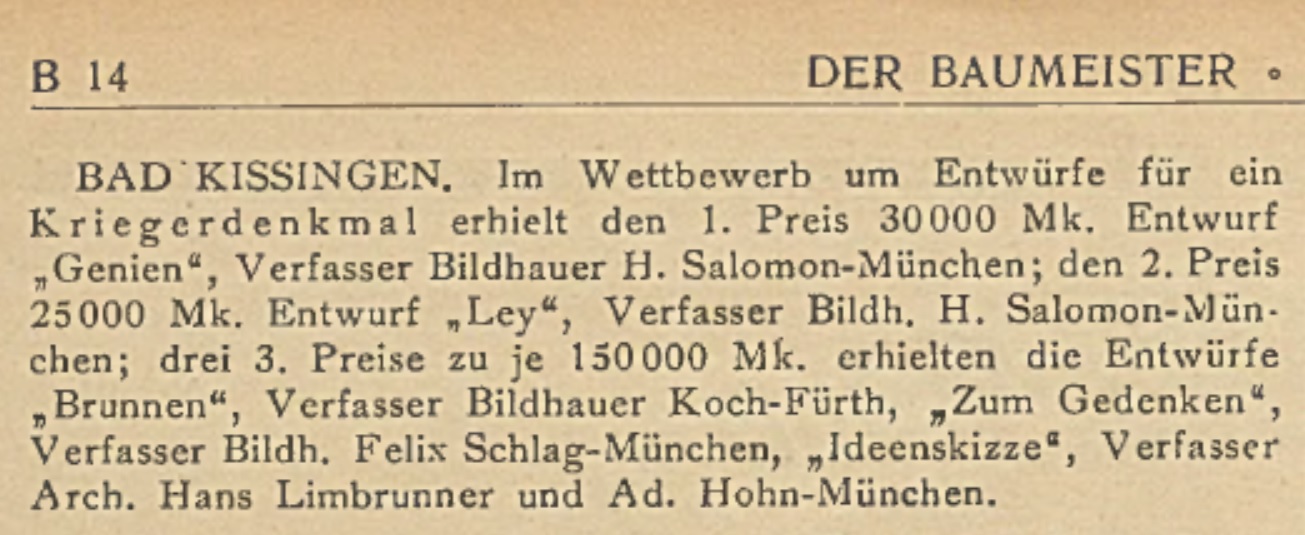 BAD
KISSINGEN In the competition for designs for a war memorial, the
1st prize receives 30000 Mk. Design "Genien", author of the
sculptor H. Salomon-München; 2nd prize 25000 Mk. Design "Ley",
author Bildh. H. Salomon-Munich; three 3rd prizes of 15000 marks
each received the designs "Fountain", maker sculptor Koch-Fürth,
"In Memory", author Bildh. Felix Schlag-München, "Idea sketch",
author Arch. Hans Limbrunner and Ad. Hoehn-Munich.
BAD
KISSINGEN In the competition for designs for a war memorial, the
1st prize receives 30000 Mk. Design "Genien", author of the
sculptor H. Salomon-München; 2nd prize 25000 Mk. Design "Ley",
author Bildh. H. Salomon-Munich; three 3rd prizes of 15000 marks
each received the designs "Fountain", maker sculptor Koch-Fürth,
"In Memory", author Bildh. Felix Schlag-München, "Idea sketch",
author Arch. Hans Limbrunner and Ad. Hoehn-Munich. 
The Schlag family in Unterhaching:
Felix Schlag, daughter Felice, Anna Schlag, and son Leo,
circa 1928.
Photo reproduced with the permission of Werner Reindl,
author of
Unterhatching - Erinnerungen an die Siedler.
Further reproduction prohibited without permission of the
Copyright owner.
Sculpture of
Anna Schlag,
by Felix Schlag circa 1927
Photos reproduced with the permission of Werner Reindl,
author of Unterhatching - Erinnerungen an die
Siedler.
Further reproduction prohibited without permission of the
Copyright owner.
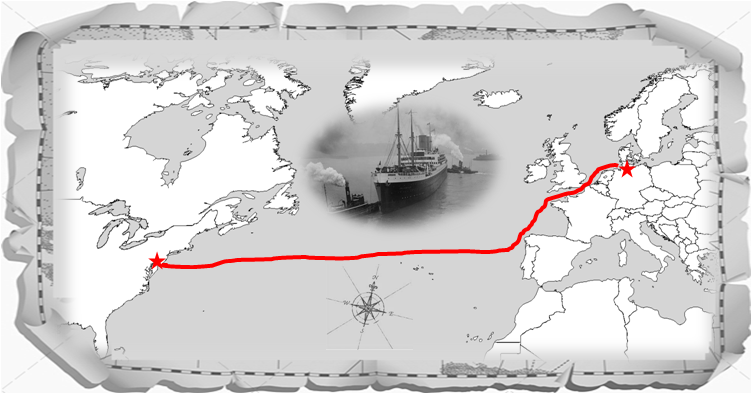 The manifest lists 37
year old Felix as being a gardener, able to read, and having
been born in Frankfurt. Anna was listed as his wife, being age
31, and having been born in Muenchen (Munich). Both Felix and
Anna were hailing from Unterhaching, a district of Munich. Felix
was described as being 5’-5” and Anna was slightly taller at
5’-7”. The Deutschland’s manifest indicates that Felix and Anna
were staying with Else Treiling, Felix’s sister, at her home
located on 416 E.52nd Street, New York, NY. This is consistent
with what Riviere’s article which reports that Felix and Anna
briefly lived with Felix's sister in New York upon their
arrival. The document also lists Felix’s brother, Hans, living
at Egenolffst 15, Frankfurt, Germany as the nearest point of
contact from their departure port.
The manifest lists 37
year old Felix as being a gardener, able to read, and having
been born in Frankfurt. Anna was listed as his wife, being age
31, and having been born in Muenchen (Munich). Both Felix and
Anna were hailing from Unterhaching, a district of Munich. Felix
was described as being 5’-5” and Anna was slightly taller at
5’-7”. The Deutschland’s manifest indicates that Felix and Anna
were staying with Else Treiling, Felix’s sister, at her home
located on 416 E.52nd Street, New York, NY. This is consistent
with what Riviere’s article which reports that Felix and Anna
briefly lived with Felix's sister in New York upon their
arrival. The document also lists Felix’s brother, Hans, living
at Egenolffst 15, Frankfurt, Germany as the nearest point of
contact from their departure port.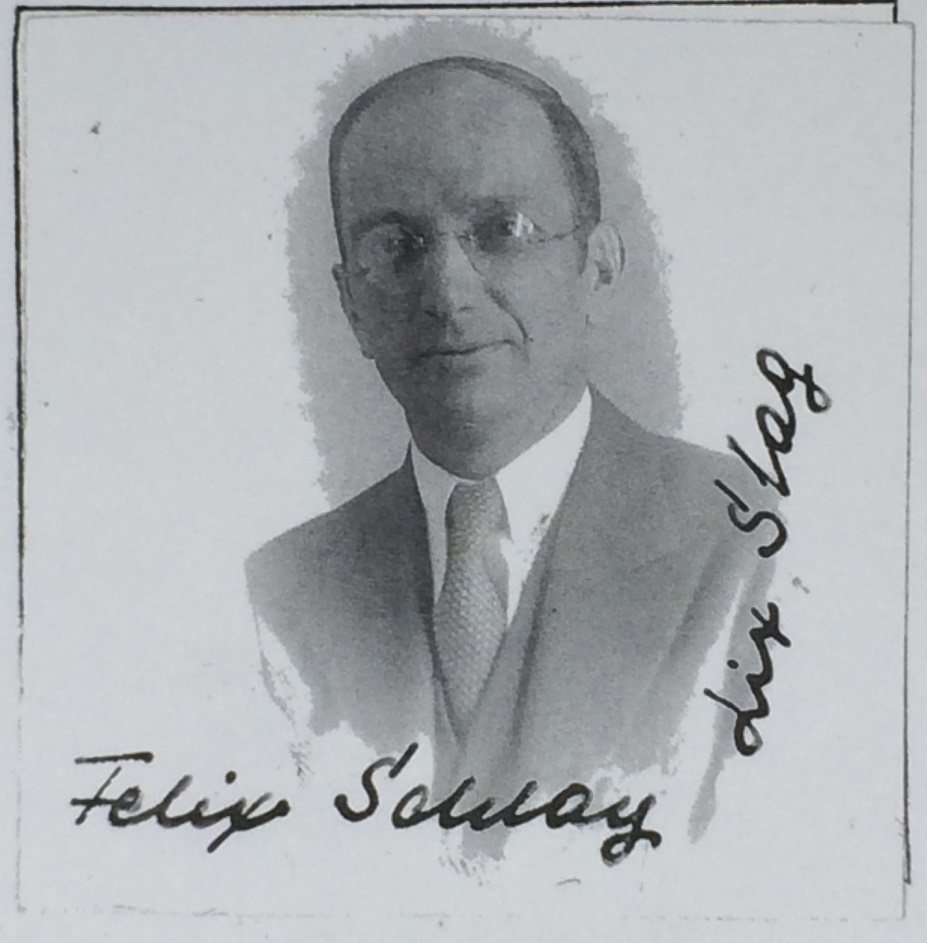 Schlag's
August 1934 Declaration of Intention listed an address of 1725 W. Wilson Avenue, Chicago, Ill. So he
moved sometime between October 1933 and August 1934. The
photo to the left was included with the Declaration of Intention
submission and is likely from the early 1930's.
Schlag's
August 1934 Declaration of Intention listed an address of 1725 W. Wilson Avenue, Chicago, Ill. So he
moved sometime between October 1933 and August 1934. The
photo to the left was included with the Declaration of Intention
submission and is likely from the early 1930's. From
July 28, 1938 – October 9, 1938 an exhibit entitled, "Art for
the Public by Chicago Artists" was held. The event was
sponsored by The Federal Art Project Works Progress
Administration in conjunction with the Art Institute of
Chicago. A work of Schlag's entitled, "The Runner" was
featured. The 16" tall mahogany statue was designed by
Schlag, and potentially carved by Robert Tuttle (http://digital-libraries.saic.edu/cdm/ref/collection/mqc/id/1291).
The Lawson School, Chicago, IL. reportedly sponsored
piece.
From
July 28, 1938 – October 9, 1938 an exhibit entitled, "Art for
the Public by Chicago Artists" was held. The event was
sponsored by The Federal Art Project Works Progress
Administration in conjunction with the Art Institute of
Chicago. A work of Schlag's entitled, "The Runner" was
featured. The 16" tall mahogany statue was designed by
Schlag, and potentially carved by Robert Tuttle (http://digital-libraries.saic.edu/cdm/ref/collection/mqc/id/1291).
The Lawson School, Chicago, IL. reportedly sponsored
piece. 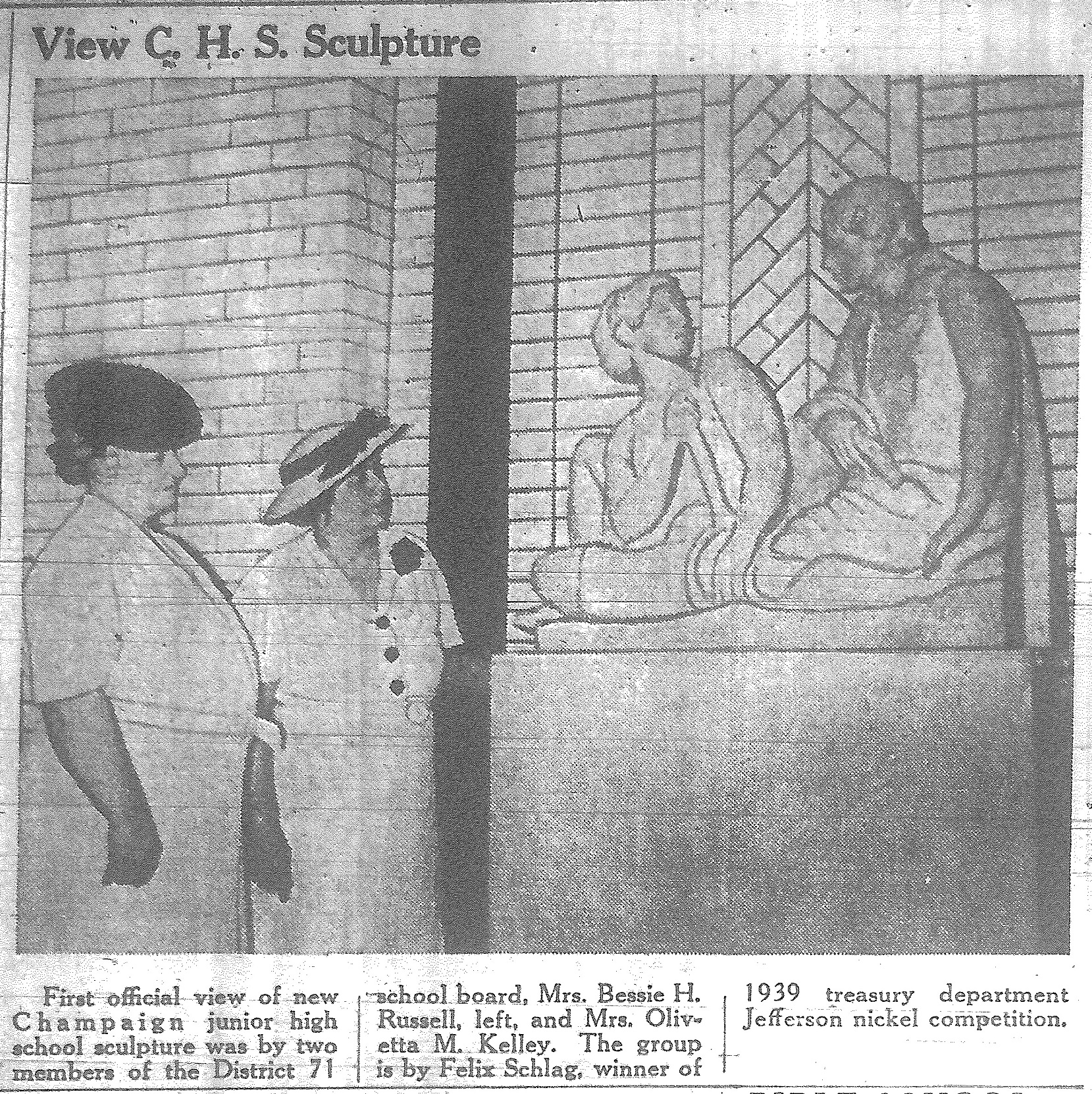 On June 1, 1939, the “Small Athletic Group”
sculpture was delivered to the Champaign, IL Junior High
School. The piece, which was designed to show the
necessity for both formal and physical education, included two
girls: one holding a tennis racquet, and the other reading from
a book. The sculptural group, weighing an estimated ton, was
installed inside the school beginning on Tuesday, June 6, 1939
and ending on Thursday, June 8, 1939. There was an
official unveiling shortly thereafter; an event that was
captured on page 24 of the Sunday June 11, 1939 edition of the
Champaign News-Gazette. It is unknown if Schlag was
present during the installation and viewing ceremony.
On June 1, 1939, the “Small Athletic Group”
sculpture was delivered to the Champaign, IL Junior High
School. The piece, which was designed to show the
necessity for both formal and physical education, included two
girls: one holding a tennis racquet, and the other reading from
a book. The sculptural group, weighing an estimated ton, was
installed inside the school beginning on Tuesday, June 6, 1939
and ending on Thursday, June 8, 1939. There was an
official unveiling shortly thereafter; an event that was
captured on page 24 of the Sunday June 11, 1939 edition of the
Champaign News-Gazette. It is unknown if Schlag was
present during the installation and viewing ceremony. 
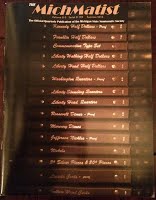

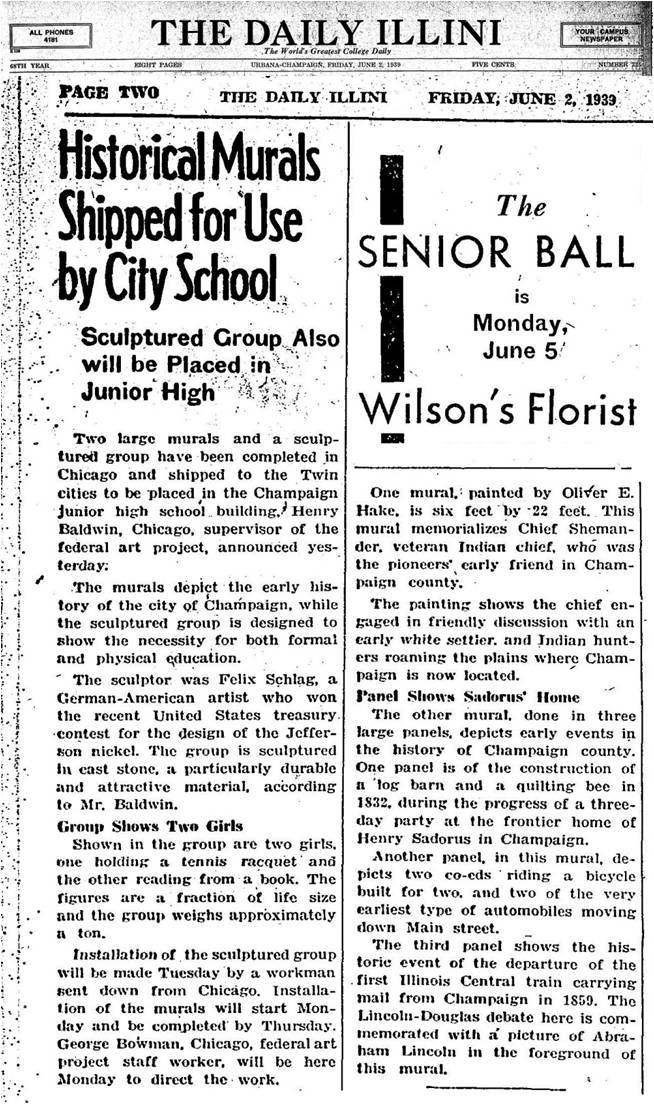
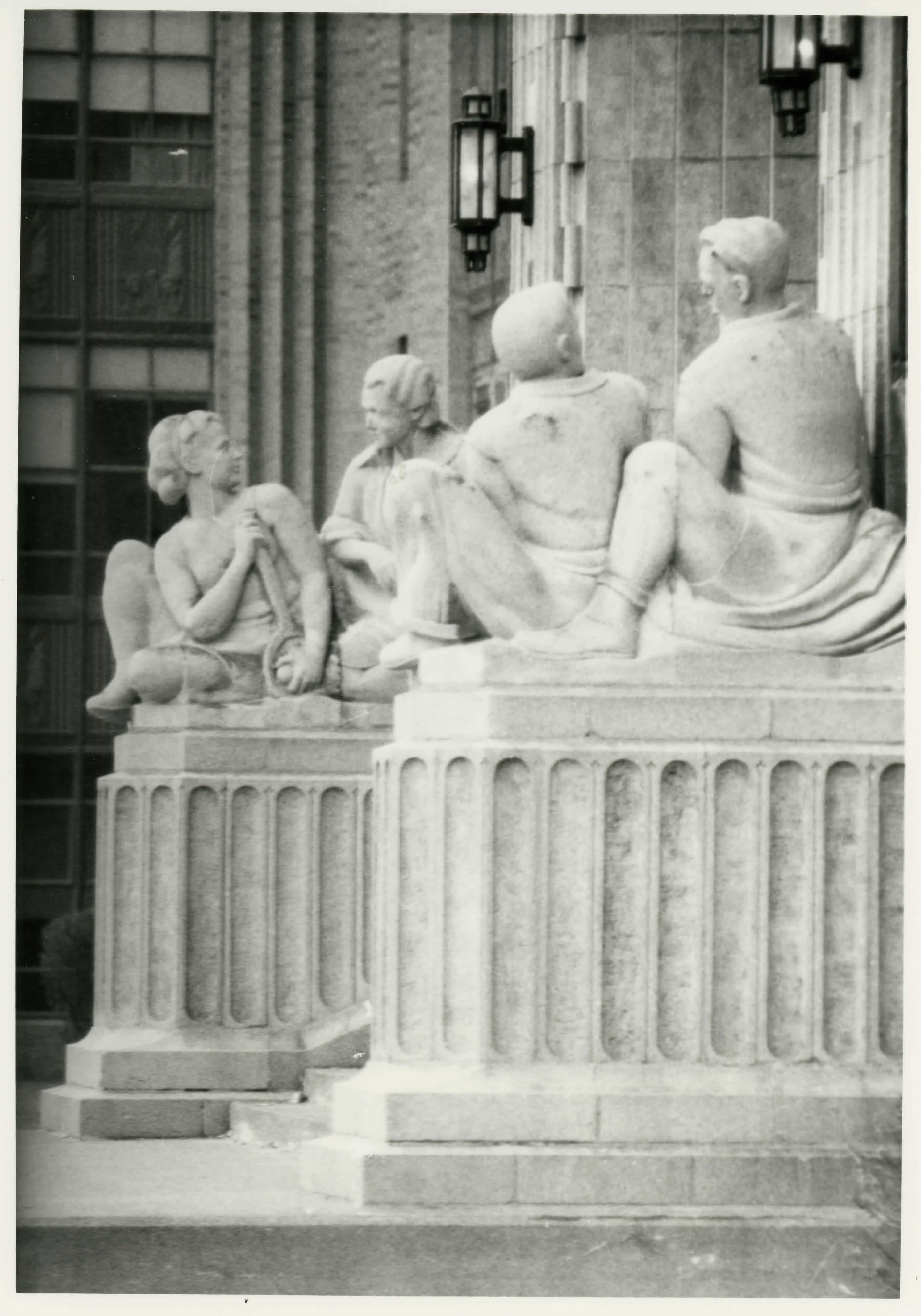 The
sculptures reportedly weighed 2.5 tons each and required "heavy
trucks and derricks" to move them from the WPA studios to the
school. Reportedly, the project was the idea of the
school's former principal, Roswell Puckett. Students from
the school served as models while the work was conceptualized in
clay. The final pieces were made of bedford stone.
The statuary group, along with other WPA murals that grace the
interior were key points made in the 1982 petition to add Bloom
Township High School to the National Register of Historic
place. Schlag was mentioned several times in this
submission.
The
sculptures reportedly weighed 2.5 tons each and required "heavy
trucks and derricks" to move them from the WPA studios to the
school. Reportedly, the project was the idea of the
school's former principal, Roswell Puckett. Students from
the school served as models while the work was conceptualized in
clay. The final pieces were made of bedford stone.
The statuary group, along with other WPA murals that grace the
interior were key points made in the 1982 petition to add Bloom
Township High School to the National Register of Historic
place. Schlag was mentioned several times in this
submission.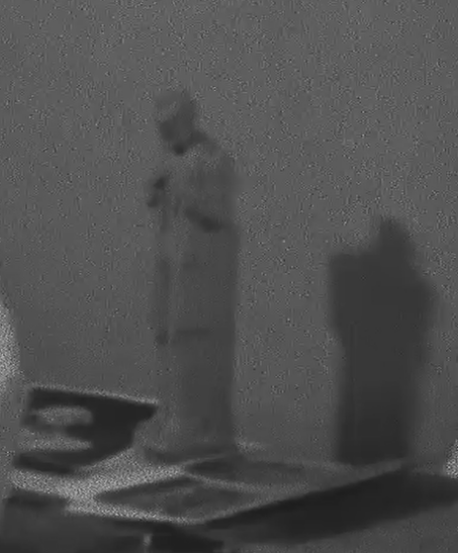 On August 30, 1941
a copyright request was filed by Madrid Cortes and Reims Arbor
of Chicago, Ill. For a statuette by Felix Schlag entitled,
Lincoln in Thought. The piece described in the application as
“Abraham Lincoln standing hatless [with a] neck shawl extending
to [his] waist with [a] hand on each coat lapel.”
On August 30, 1941
a copyright request was filed by Madrid Cortes and Reims Arbor
of Chicago, Ill. For a statuette by Felix Schlag entitled,
Lincoln in Thought. The piece described in the application as
“Abraham Lincoln standing hatless [with a] neck shawl extending
to [his] waist with [a] hand on each coat lapel.” On March 6, 1942 Felix submitted a copyright application for
a sculptured model he called, “Heraldic American eagle.” The
sculpture was described as a “Heraldic American Eagle, holding
a snake in its claws, [with an] American Shield in [the]
center, [colored] red, white, and blue.” Felix listed Elk
Rapids, Michigan as his address on the application. As with
his previous application, he seemingly submitted a photograph;
however, the Copyright office did not include it in their
archives. It is possible it within the wider collections of
the Prints and Photographs department; however, they were not
readily available or cataloged in any manner that allowed for
easy retrieval and viewing.
Note: If anyone has a picture of Schlag's “Heraldic
American Eagle,” please contact us.
On April 27, 1942, in Antrim County, Bellaire Michigan, Felix
registered for service with the United States military. He was
50 years old, self employed, married, and living Elk Rapids,
Michigan. Had it been accepted into service, he possibly could
have engaged in combat with his German relatives, including
his son Leo.
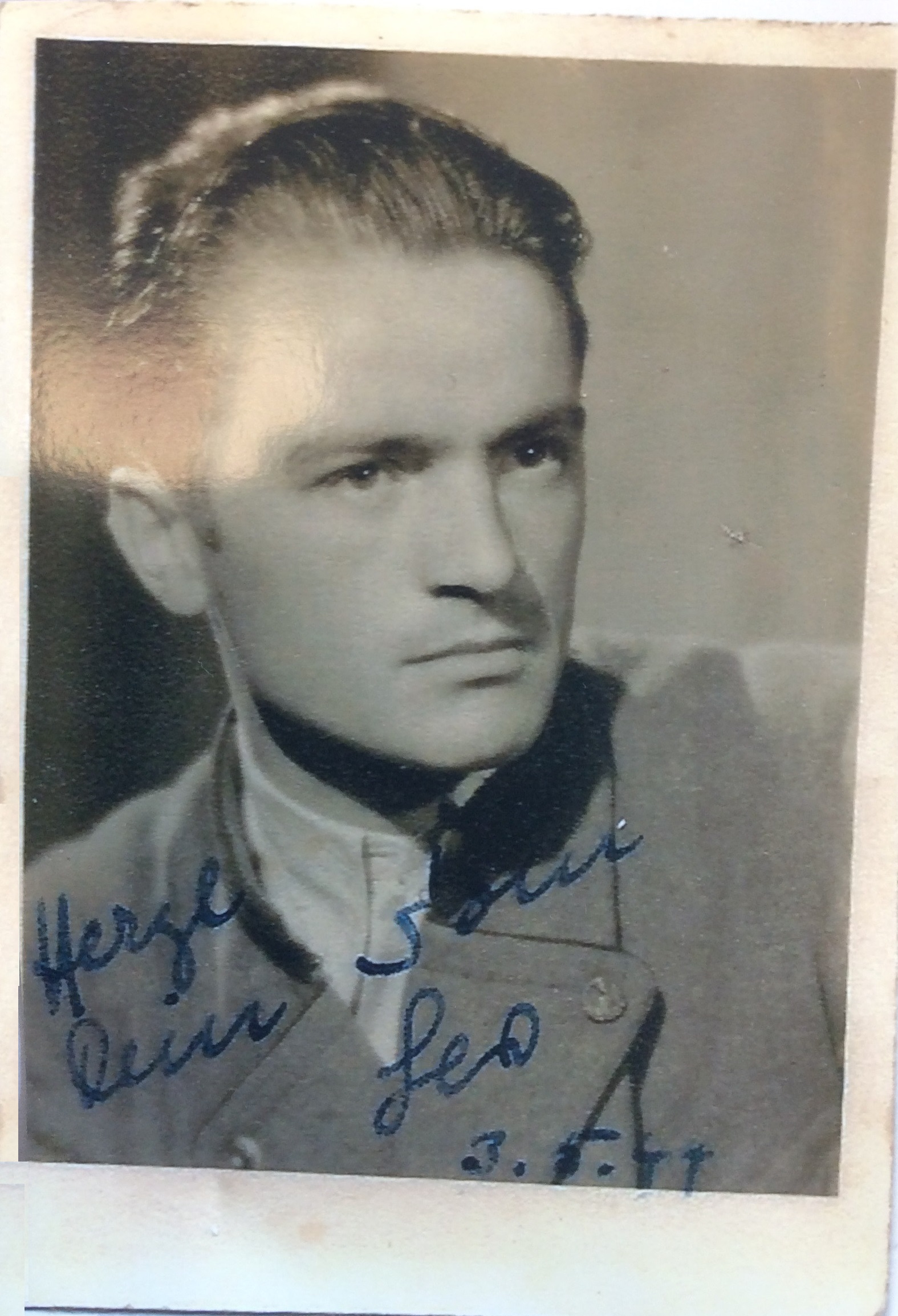 This photo of Leo Schlag is dated March 5, 1944 and was
provided by a relative.
This photo of Leo Schlag is dated March 5, 1944 and was
provided by a relative.
Tagically, on April 8, 1945 Felix's son, Leo, passed away just one month shy of his 24th birthday and the end of World War II. He was a Lance Corporal in the German army and died while in Austria. His records imply that he was located in the Markt Allhau in the Oststeiermark (now Styria) region of Austria. During this time, the German Army was engaged in the Soviet led Vienna Offensive (April 2-13, 1945).
Details of Leo's death were described in heartfelt note dated April 16, 1945 from commanding officer Hans Wentzel to Anna Schlag. A translated copy of this letter was shared by a family member and suggests that Leo died on the evening of April 8th between the hours of 2100 (9 PM) and 2200 (10 PM) as a result of friendly fire. He was reportedly off duty and a few hundred meters behind the main battle line. When two signallers and a staff seargant did not return to camp, Leo went to look for them. About a 100 meters from the house where his unit was staying, Leo approached a sentry that spoke in "broken and unintelligble german." It is beleived Leo mistook this sentry for a Russian and the two engaged in a scuffle; ending when the sentry's weapon discharged and Leo was struck by the round.
Leo is buried in the War Cemetery in Mattersburg, Austria
(Block 4, Row 12, Grave 852).
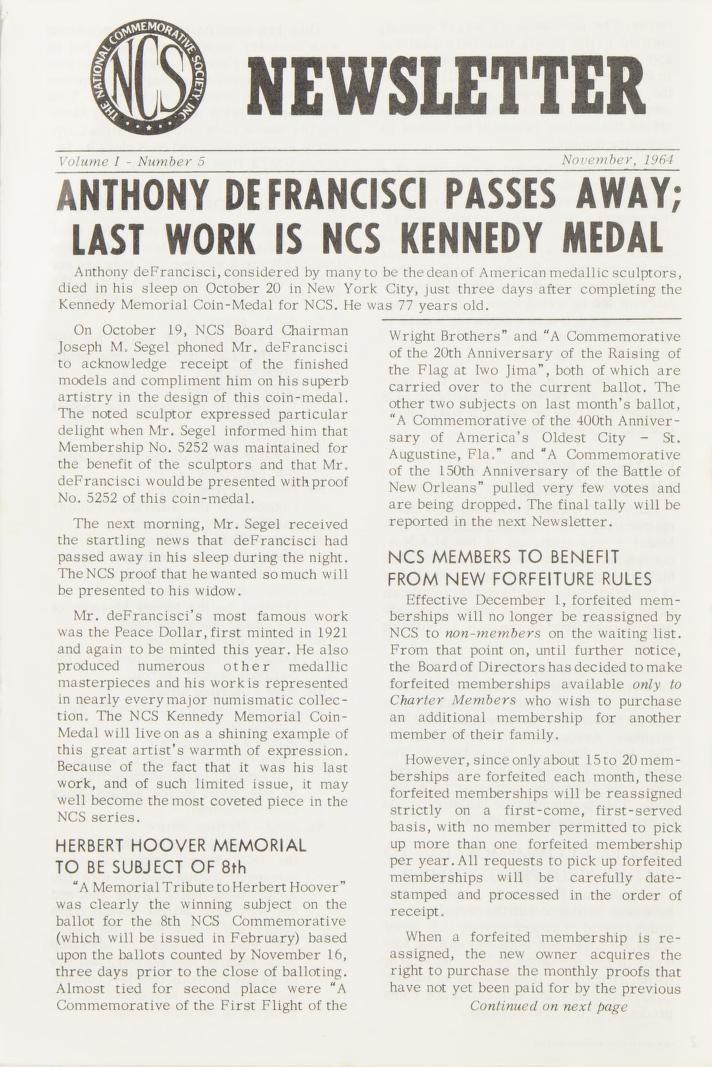
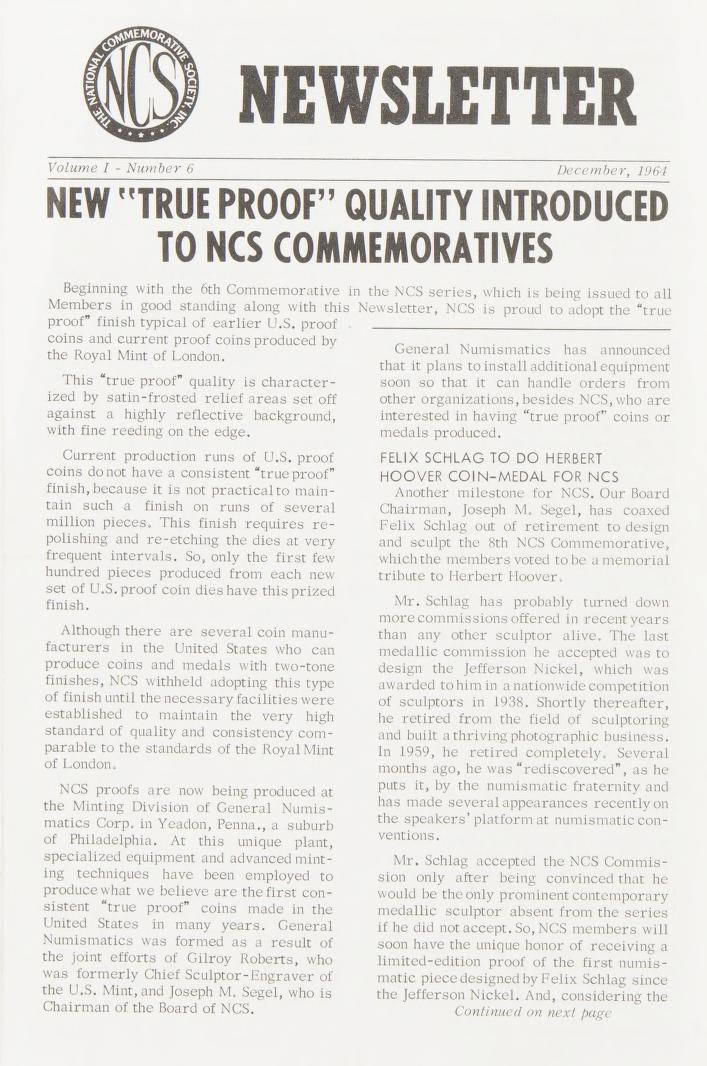
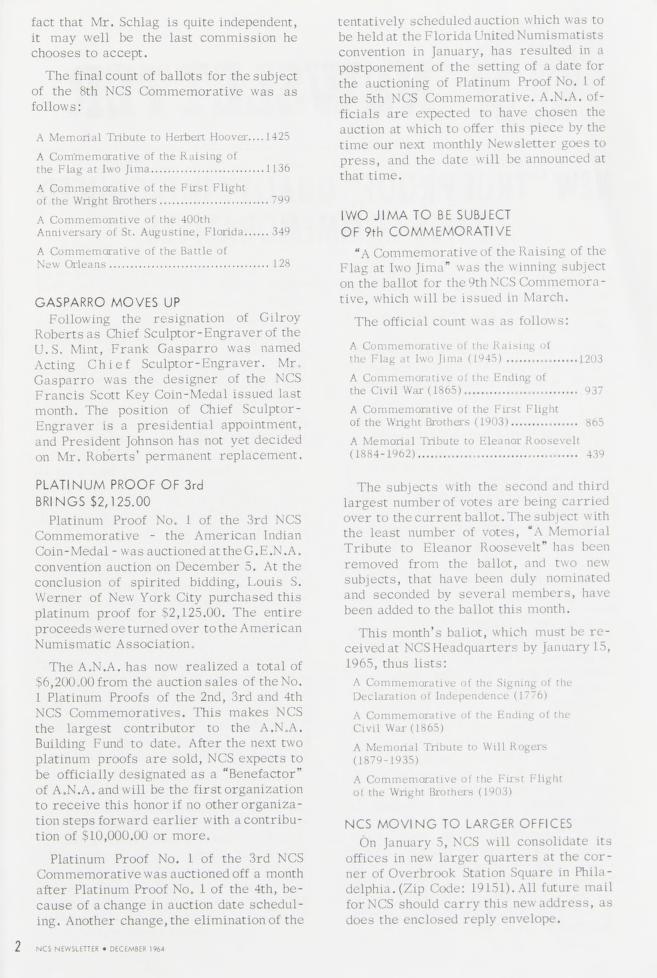

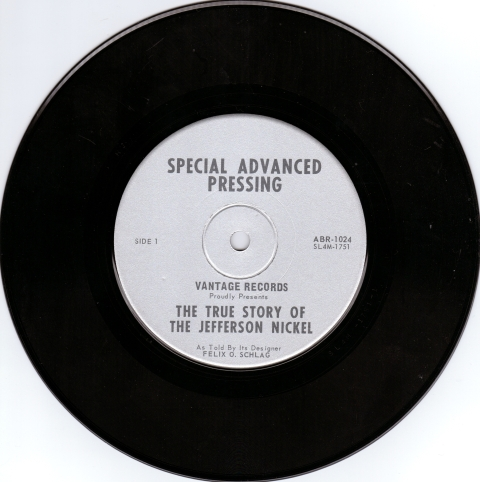
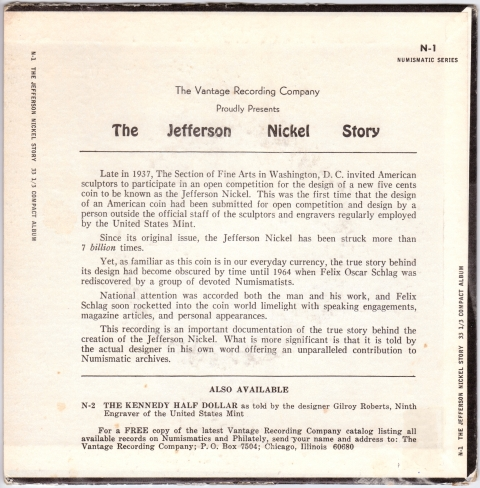
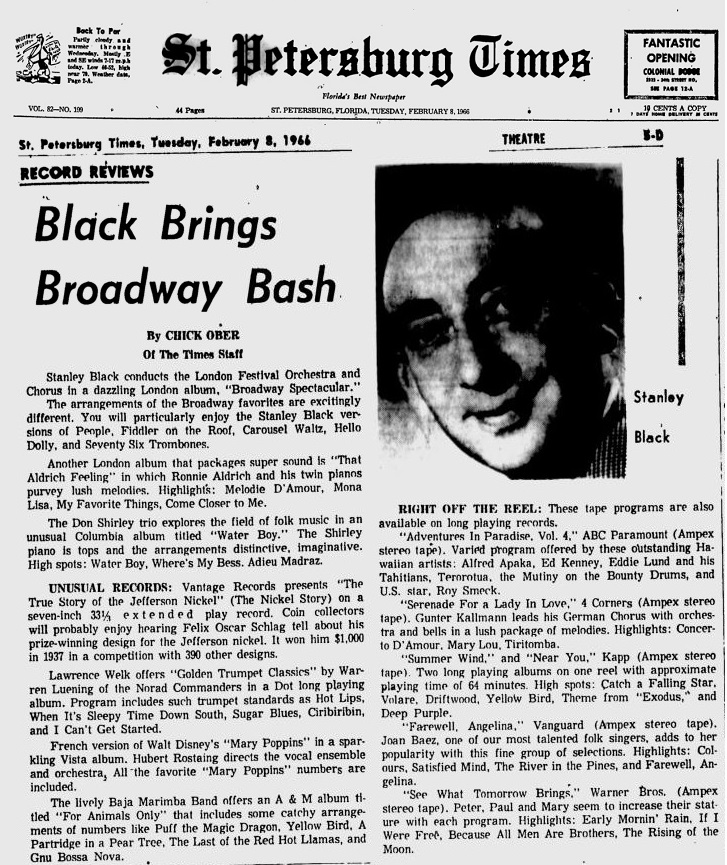
Note: Thank you to David A. for sharing his copy of the
International Fraternal Commemorative Society (IFCS)
newsletter pertaining to this coin.
